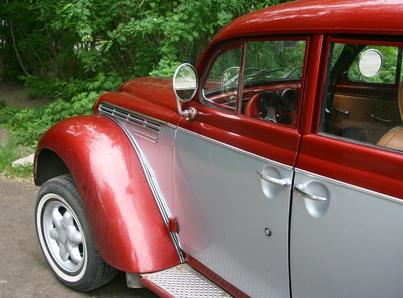
"Tiger striping" occurs when metallic paint has been applied unevenly. The paint job appears to have areas of deeper or lighter colors. Since painters spray the paint in horizontal rows, the paint appears to have lighter and darker horizontal stripes. A botched metallic paint job is painful for the buyer and the technician. Special care has to be taken to avoid a car that looks like a jungle animal.
The painter has to be very careful of the strokes he makes with the spray gun. He must overlap each stroke by 50 percent without painting an already overlapped area which would result in paint that is wetter and thicker. The operator can fail by not mixing the paint properly. Metallic paint has to be mixed according to the manufacturer's instructions, usually eight parts acrylic enamel color, one part hardener and two parts medium urethane reducer. The reducer is a thinning agent.
The spray gun atomizes the paint as it leaves the nozzle. The spray gun injects paint into the air flow created by the air compressor attached to the spray gun. The blast of air separates the paint into tiny drops. If the paint is too thin, the paint won't have the viscosity needed for complete coverage. Paint that is too thick will form droplets that are too big and the application won't be even. A nozzle that is the wrong size or an improperly adjusted compressor can throw off the paint atomization and result in tiger striping. Paint that is simply poor quality can be a problem. The paint has to be a uniform consistency and has to carry the metallic particles evenly to give a uniform result.
After the metallic paint is applied, the operator sprays the car with a clear coat that is clear paint that protects and highlights the metallic paint underneath. If the metallic paint isn't dry, the clear coat will mix with the portion of the colored paint that is still wet and cause mottling or tiger striping.